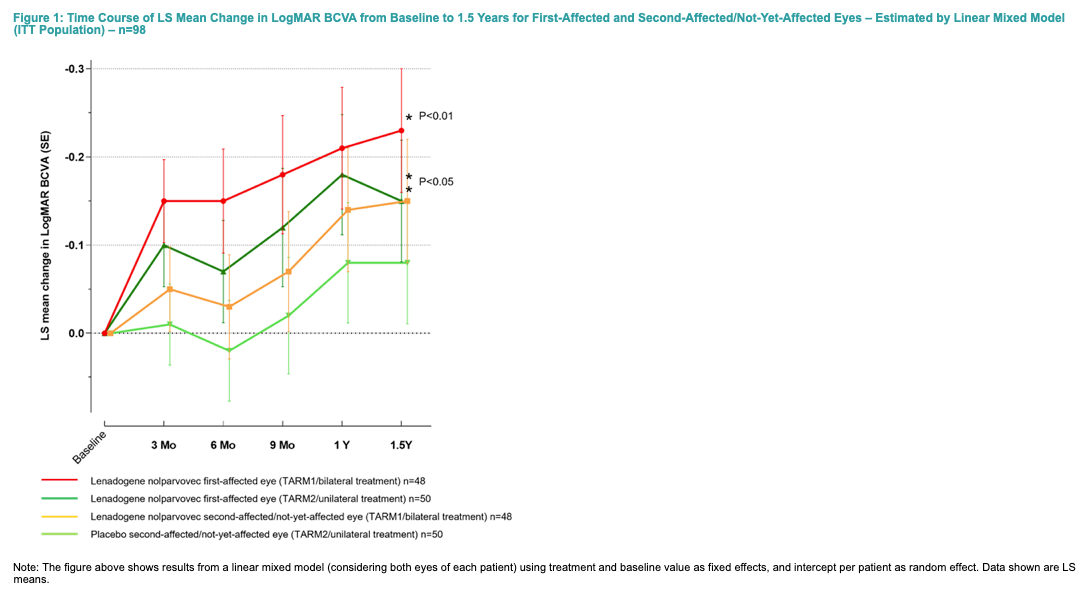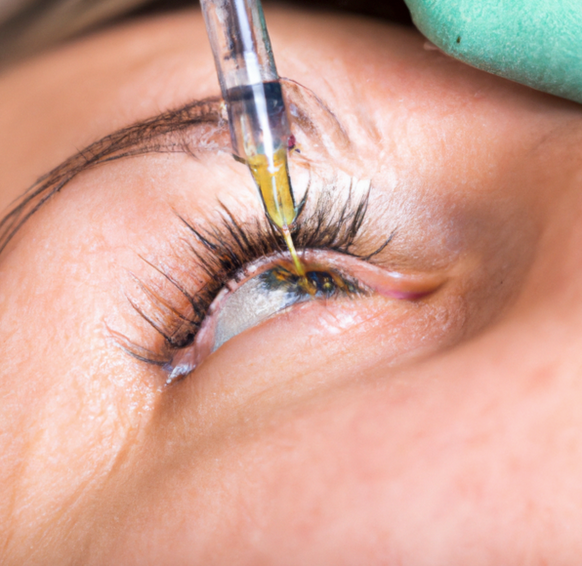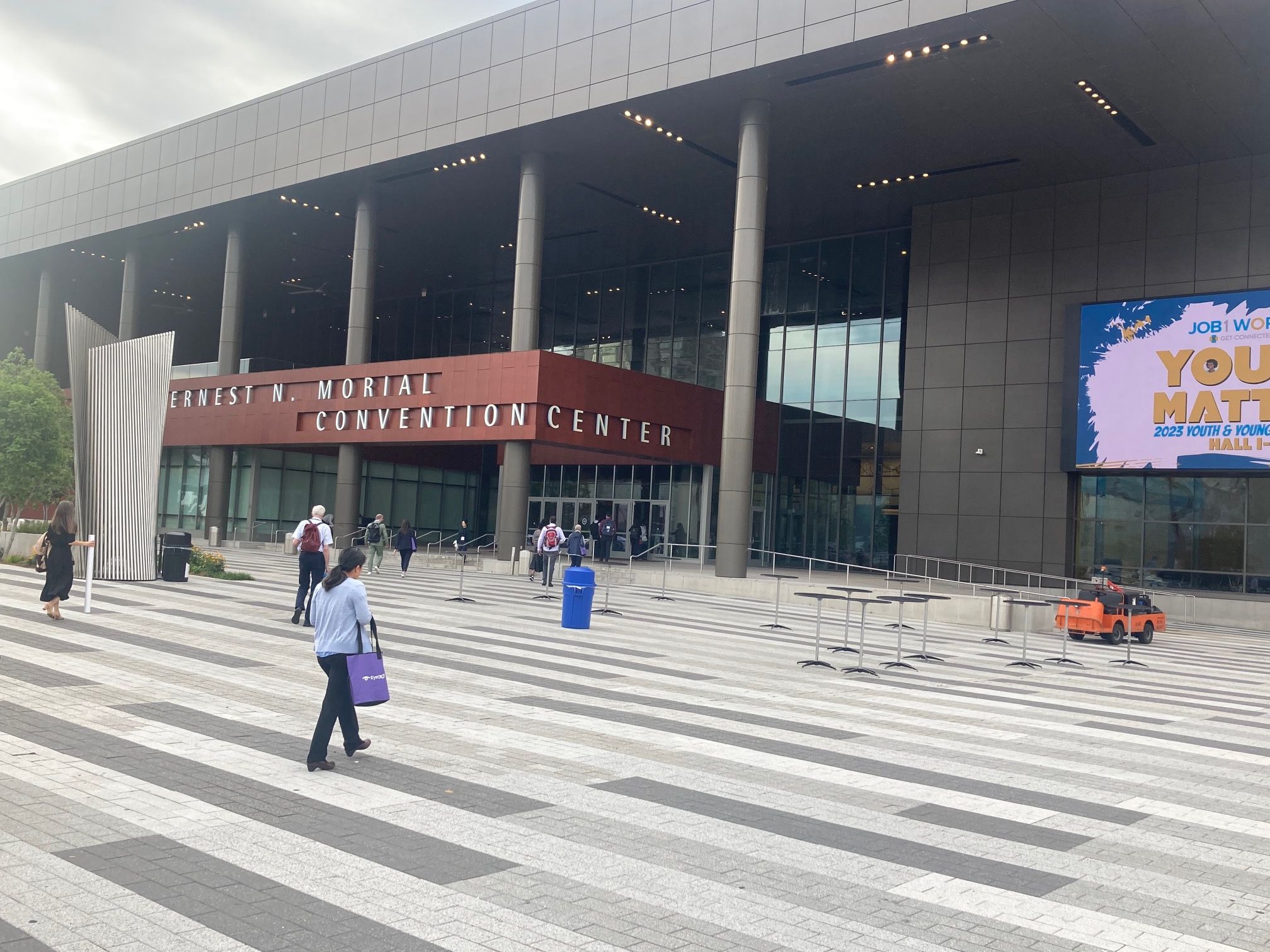Article
GenSight Biologics publishes results of REFLECT pivotal clinical trial
Author(s):
Results of the clinical trial show that efficacy of lenadogene nolparvovec is achieved with a good safety profile.
GenSight Biologics today announced it has published the efficacy and safety findings at 1.5 Year post-treatment in ND4-LHON patients treated with lenadogene nolparvovec (LUMEVOQ).

GenSight Biologics today announced it has published the efficacy and safety findings at 1.5 year post-treatment in ND4-LHON patients treated with lenadogene nolparvovec (LUMEVOQ) from the REFLECT pivotal clinical trial.
The findings were published in Brain.
According to the company, the REFLECT results demonstrate statistically significant visual acuity improvement in ND4-LHON patients from baseline in LUMEVOQ treated eyes, with an additional effect for bilaterally injected patients in comparison with a unilateral treatment (Figure 1). A good safety profile was observed and was comparable in unilaterally and bilaterally treated patients demonstrating the positive outcome of bilateral injections of LUMEVOQ.
“These results demonstrate that LUMEVOQ produces a significant improvement in visual acuity for LHON patients, with a likely additional effect when patients are treated bilaterally,” Patrick Yu-Wai-Man, MD, PhD, a professor of Ophthalmology and Honorary Consultant Neuro-ophthalmologist at the University of Cambridge, Moorfields Eye Hospital, and the UCL Institute of Ophthalmology, United Kingdom, and principal investigator of REFLECT, said in the news release. “They also show that this efficacy is achieved with a good safety profile. This gene therapy represents a real hope for patients affected by this devastating blinding disease.”
REFLECT is the third Phase III clinical trial evaluating the efficacy and safety of lenadogene nolparvovec in ND4-LHON patients. It is also the first clinical trial assessing the efficacy of a bilateral intravitreal injection (IVT) of LUMEVOQâ, while in the three previous trials REVEAL1, REVERSE2,3,4 and RESCUE,3,4,5 it was exclusively administered as unilateral IVT. With the completion of REFLECT, LUMEVOQâ has been administered to 189 patients across four clinical trials.
The analyses of the REFLECT trial population before treatment show demographic characteristics, visual function, and retinal anatomic measurements consistent with the natural history of the ND4-LHON disease6.
“The profile of REFLECT patients, viewed together with those of REVERSE and RESCUE, provide important information on the inferred natural history of ND4-LHON that should help guide future research in subjects with the m.11778G > A mutation,” said Prem Subramanian, MD, PhD, a professor of Ophthalmology, Neurology, and Neurosurgery at the Sue Anschutz-Rodgers University of Colorado Eye Center and REFLECT principal investigator.

References
1 Vignal-Clermont C, Girmens JF, Audo I, et al. Safety of intravitreal gene therapy for treatment of subjects with Leber hereditary optic neuropathy due to mutations in the mitochondrial ND4 gene: the REVEAL study. Biodrugs. 2021;35(2):201-214.
2 Yu-Wai-Man P, Newman NJ, Carelli V, et al. Bilateral visual improvement with unilateral gene therapy injection for Leber hereditary optic neuropathy. Sci Transl Med. 2020;12(573):eaaz7423.
3 Moster ML, Sergott RC, Newman NJ, et al. Cross-sectional analysis of baseline visual parameters in subjects recruited into the RESCUE and REVERSE ND4-LHON gene therapy studies. J Neuroophthalmol. 2021;41(3):298-308.
4 Newman NJ, Yu-Wai-Man P, Carelli V, et al. Intravitreal gene therapy vs. natural history in patients with Leber hereditary optic neuropathy carrying the m.11778G>A ND4 mutation: systematic review and indirect comparison. Front Neurol. 2021;12:662838.
5 Newman NJ, Yu-Wai-Man P, Carelli V, et al. Efficacy and safety of intravitreal gene therapy for Leber hereditary optic neuropathy treated within 6 Months of disease onset. Ophthalmology. 2021;128(5):649-660.
6 Newman NJ, Carelli V, Taiel M, Yu-Wai-Man P. Visual outcomes in Leber hereditary optic neuropathy patients with the m.11778G>A (MTND4) mitochondrial DNA mutation. J Neuro-Ophthalmol Off J North Am Neuro-Ophthalmol Soc. 2020;40(4):547-557.
Newsletter
Don’t miss out—get Ophthalmology Times updates on the latest clinical advancements and expert interviews, straight to your inbox.





